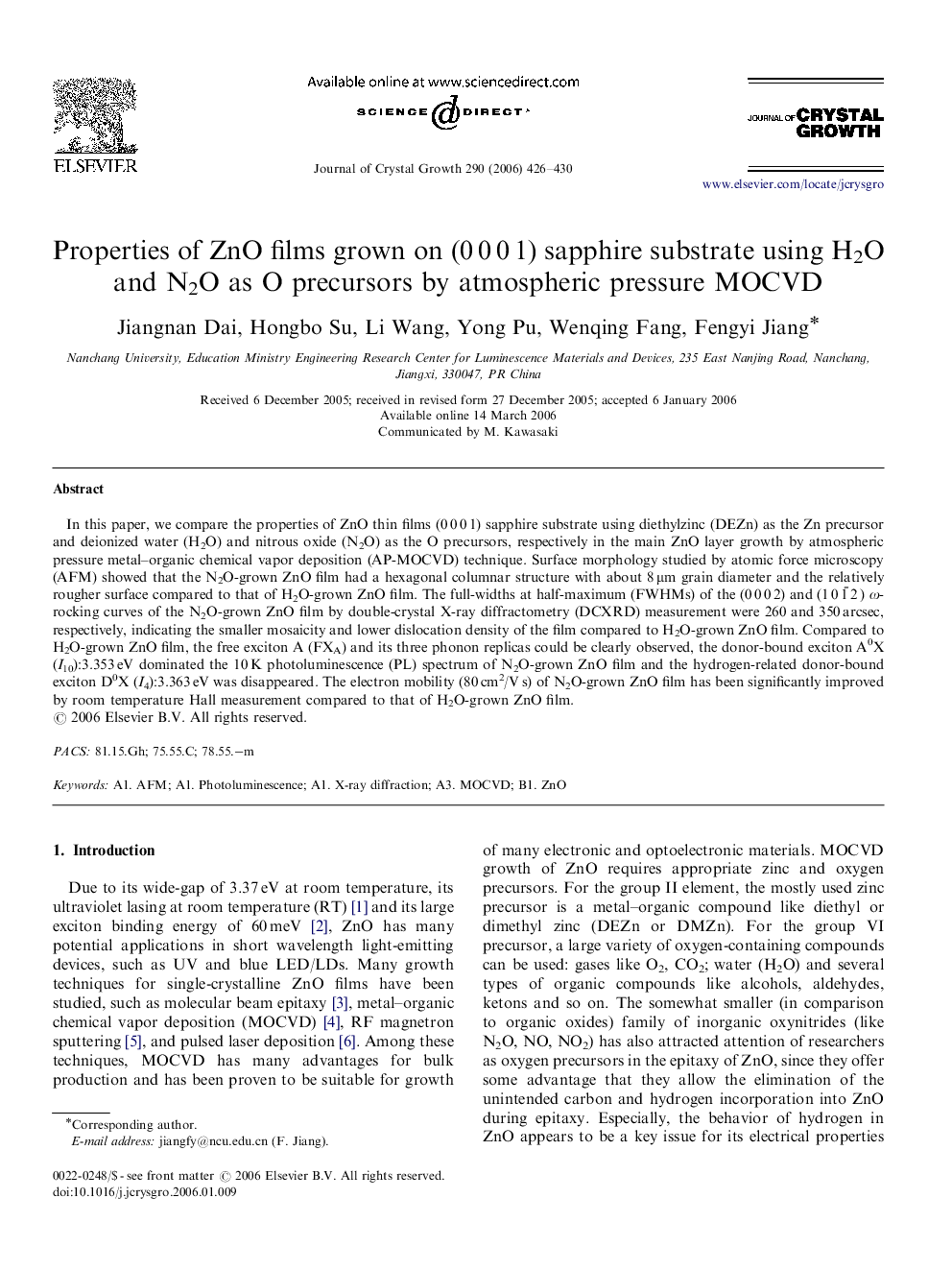| Article ID | Journal | Published Year | Pages | File Type |
|---|---|---|---|---|
| 1796960 | Journal of Crystal Growth | 2006 | 5 Pages |
In this paper, we compare the properties of ZnO thin films (0 0 0 1) sapphire substrate using diethylzinc (DEZn) as the Zn precursor and deionized water (H2O) and nitrous oxide (N2O) as the O precursors, respectively in the main ZnO layer growth by atmospheric pressure metal–organic chemical vapor deposition (AP-MOCVD) technique. Surface morphology studied by atomic force microscopy (AFM) showed that the N2O-grown ZnO film had a hexagonal columnar structure with about 8 μm grain diameter and the relatively rougher surface compared to that of H2O-grown ZnO film. The full-widths at half-maximum (FWHMs) of the (0 0 0 2) and (101¯2) ω-rocking curves of the N2O-grown ZnO film by double-crystal X-ray diffractometry (DCXRD) measurement were 260 and 350 arcsec, respectively, indicating the smaller mosaicity and lower dislocation density of the film compared to H2O-grown ZnO film. Compared to H2O-grown ZnO film, the free exciton A (FXA) and its three phonon replicas could be clearly observed, the donor-bound exciton A0X (I10):3.353 eV dominated the 10 K photoluminescence (PL) spectrum of N2O-grown ZnO film and the hydrogen-related donor-bound exciton D0X (I4):3.363 eV was disappeared. The electron mobility (80 cm2/V s) of N2O-grown ZnO film has been significantly improved by room temperature Hall measurement compared to that of H2O-grown ZnO film.
